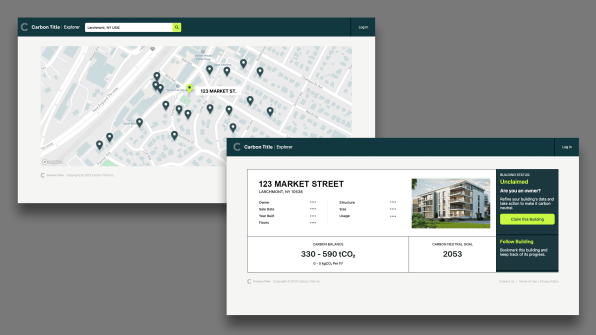This free tool tells you the carbon footprint of your home or office
If you type your address into a new online tool, it will tell you the estimated carbon footprint of your house or apartment building—including both the emissions from construction and the energy used to run it.
“Forty percent of greenhouse gases come from buildings, and we kept talking to people and people just didn’t realize it,” says Miles Haladay, cofounder of Carbon Title, the company that built the free tool, called the Carbon Title Explorer. “Ultimately, we feel like it’s kind of a dirty secret in real estate. We all talk about how we’re getting green, but we’re still emitting a massive amount of carbon dioxide every year.”

The tool pulls data from a variety of sources about the size of each building, materials used, and geography, for 100 million different buildings in the U.S., ranging from office spaces, hospitals, and schools to single-family homes and apartment buildings. “You imagine different energy usage in Phoenix than in Minneapolis and in Florida,” says cofounder Trevor Dryer. “Not only is the energy usage different because of the climate, but the local electrical grids use different percentages of renewables, so all that gets taken into account to give an estimate.”
Homeowners or commercial building owners can claim a building to add more specific data—for example, if they’ve installed solar panels or heat pumps, that will bring the total carbon footprint down. If they buy carbon offsets (something that Carbon Title also sells), that will also change the total. Any changes are tracked on a carbon-neutral blockchain.
The company envisions homebuyers using the tool as they compare options on the market. “We really believe that people are going to start looking at CO2 emissions for buildings like they do a nutrition label,” Dryer says. Companies can use it to compare office buildings; cities could use it as they plot out larger sustainability strategies.
Providing the data can be a first step in convincing building owners to shrink their carbon footprints, something the founders see as a necessity. While only around 100,000 buildings have been certified by the sustainable building standard LEED, for example, “there are 6 million commercial buildings in the U.S.,” says Dryer. “We have to get all these buildings. This has to be a huge, broad-based movement to get to our climate goals by the end of this decade.”
(11)



